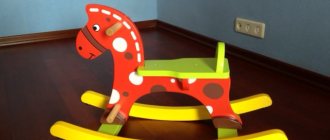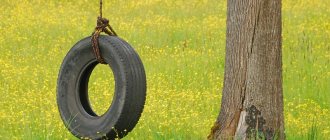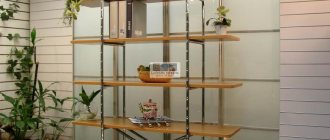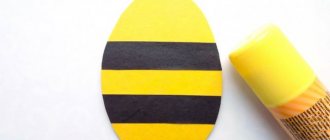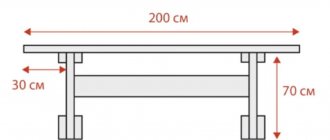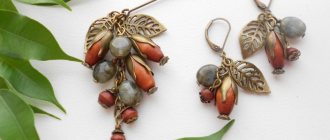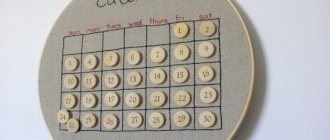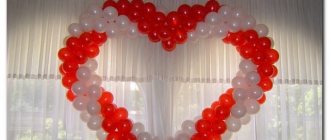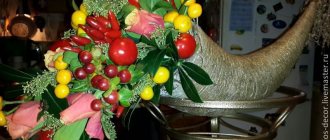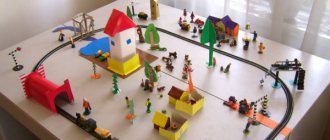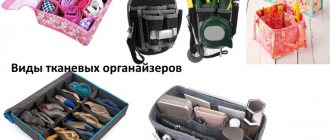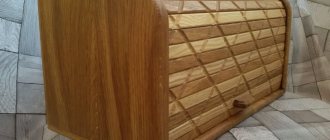How to make a wooden horse with your own hands
Wooden Horse How to Make Wooden Horse DIY
Read also: Jojoba oil for hair
In principle, nothing complicated. In any search engine we find a picture of a horse. We enlarge the image on the monitor screen. Place a sheet of paper on the monitor and trace the outline of the horse. We cut out the stencil with scissors and use the stencil to draw the outlines of the horse with our own hands on the selected thin wooden board or shield. We take a jigsaw, insert a saw blade and cut out the horse along the contour. We sand the workpiece and, if necessary, paint it in the color you like. Don't forget to draw the eyes and line the mane and tail with paint.
Outline of a horse Transferring the outline onto the board Wooden horse
Make your own toy - a wooden horse!
Don't forget to subscribe to receive news about new blogs on the Secret of the Master site!
DIY rocking toy
Few of us did not dream of such a toy as children. Often there were such toy horses in kindergarten, and sometimes the children almost fought, arguing whose turn it was to play. Nowadays the children's horse is becoming popular again, so it will be an excellent gift for a child. The design of the toy is quite simple, so it will not be difficult for you to assemble it yourself. The materials used largely depend on the type of toy and design chosen, but the most commonly used are:
- sheet of plywood or wooden boards;
- copy of the template;
- carbon paper to transfer the pattern onto plywood or wood;
- table;
- jigsaw;
- awl;
- glue, paint, brush set.
When making a horse, use only environmentally friendly and hypoallergenic materials. This is especially true for paints and glue. The horse can be additionally decorated with synthetic fur upholstery, but in this case, do not forget about the foam layer so that the baby can sit softly.
How to make a plywood horse?
The selected drawing should be enlarged by the required number of times, depending on the age and height of the child. Most often, the diagram is enlarged 8-10 times for children 4-5 years old, respectively. The classic plywood horse consists of 7 parts - be sure to number them so that it is clear where each element is attached. These are the details:
- Two identical sides of the horse;
- A large one-piece piece with the head and tail of a horse that fits between the sides;
- Two strips, with the help of which the toy is further strengthened from below;
- One spacer that is installed at the rear of the rocker and connects the sides to the middle piece. A saddle is placed on top of the spacer;
- Seat;
- Stirrups - 2 parts attached to the saddle using straps (for which grooves must be provided in the seat);
- One spacer for the front part of the horse - attached according to the same principle as a similar rear part.
How to make a rocking horse out of wood?
The base of the wooden horse consists of 4 parts - two flat rounded sides and two intermediate boards necessary to strengthen the entire toy at the top and bottom. In addition, a toy horse needs a head, and a child needs a saddle with a backrest and slats to rest his feet on while playing. Smooth pine or spruce boards from 2 cm thick are suitable as starting material.
How to choose?
The horse will become your child's faithful friend for several years. The kid will spend many days playing games, imagining himself as a knight rushing to defeat a dragon, or a princess who decided to go on her own adventures. Considering that the baby will spend a lot of time with the toy, its choice must be approached very responsibly.
Important: before purchasing, make sure that the rocking horse you choose is suitable for your child. To make your choice easier, there are a number of criteria that should be followed:
Material
A wooden horse is the most stable because it is quite heavy. It will be difficult for a child to accidentally turn it over and fall, even if he swings very intensely on it. Wood is the most optimal material for playing at home. Summer is the best time to play outdoors. If you want the rocking horse to become your baby’s companion on the street - on the playground or in the country, it is better to choose plastic. This material is wear-resistant, does not fade under the sun, and is not afraid of water.
The plastic is easily and quickly washed off from street dirt - ordinary wet wipes are enough to wipe it.
A rubber toy has one important advantage - it is hypoallergenic, which is especially important if the baby is prone to allergies. It is made of durable, high-quality rubber, which is very easy to wash, and the horse will not collect dust. On such a horse you can not only swing, but also ride due to the elasticity of the rubber, which is very useful for the physical development of the child.
The most comfortable and beautiful option is a plush horse. The frame is usually made of plastic or wood, but the upholstery is much more reminiscent of a real horse. The animal has a long mane and tail that are fun to comb and decorate. This toy is a great gift for a birthday or New Year; a child will remember it for a long time.
Safety
Of course, rocking chairs for children should not only be beautiful and durable, but also safe. When choosing the right model, be sure to look at the label; the information on it should indicate the age of the child for whom it can be used. Check the stability of the skids and the swing amplitude. If the toy swings too much, it will tip over along with the little rider. This is especially true for plastic horses - they are the lightest.
If your baby has allergies, you should not buy toys with plush upholstery - the fleecy surface will collect too much dust. Pay attention to the quality of the varnish coating - small children are not averse to tasting their toys, so it’s better not to take risks.
Important: check the quality certificates before purchasing a toy.
Comfort
Of course, a baby rocking chair should be comfortable. When purchasing, consider the size of the toy and the height of the baby, as well as the length of his arms and legs. If the horse is too big, the baby may not be able to reach the arms. The handles themselves, which he will hold on to, should be located at such a level that the child does not have to constantly hold his hands above or below shoulder level - his limbs will become numb. The comfort of the seat is very important - it should follow the anatomical shape and have fairly soft upholstery. It is best to purchase rocking chairs with high backs so that you can lean on them.
When deciding to give such a wonderful toy to your baby, consider his age. The fact is that children under 1.5 years old can perceive it as alive. For them, such a horse made of wood with plush or fur upholstery is no different from a real animal and can be scary. It’s best not to show the gift from the doorstep - take it to the nursery and wrap it in bright gift paper; the wrapper can be additionally decorated with balloons, bows and ribbons. Unpack the toy gradually, so the baby will be captivated by the process and will quickly get used to his horse, and not be afraid of its appearance.
Horse and cart
To make a horse and cart you will need thick and thin birch branches, self-tapping screws, bottle caps, and rubber winding.
- A thick birch branch is suitable for the body of the horse. You need to cut out a body 50 cm long from it.
- Take smaller branches for the legs. In order for the figurine to stand firmly and not wobble, you need to drive its legs into the ground. In this case, all work must be carried out in the place where the horse will stand; foresee this in advance.
- In the block that will serve as the muzzle, you need to cut out a recess for the mouth.
- Connect the head to the body using the neck, all wooden parts are fastened with self-tapping screws.
- The eyes for the horse can also be cut out of wood, or you can use ordinary bottle caps. You can simply glue them to the muzzle with wood glue.
- For the mane and tail, you need to take thin branches and weave them into a broom, attach them with nails to the body.
- For the reins and saddle, you need to take the rubber tape and attach them in place using glue or nails.
- Next came the turn of the cart; it can be built in different ways. You can take four wheels and connect them to birch sticks with screws, this will create a simple cart. You can take wooden boards and make a wooden box out of it, like a real cart, and attach four wheels. You can fill the cart with soil and plant flowers in it. Vegetables growing from it, such as pumpkin, look interesting. Or you can put a toy old man in the cart, then the composition will be completely completed.
What do dictionaries say?
In reference books, this word is interpreted as the young bast of some trees, which is divided into strips and thin fibers. Dahl's dictionary adds a definition: bast is a fragile subcortex. The tree tissue located directly under the bark is called bast. Behind it is young wood. The Brockhaus and Efron dictionary explains how bast was extracted: they cut down a young tree, cut off its branches and cut off the bark along the trunk. This activity is called “pulling the bast.” The best bast comes from linden. The proverb “ripped off like a stick” just speaks about this type of fishing.
Dictionaries unanimously state that “lyko” is a word used only in the singular. That is, you cannot say: “I kicked a lot.” It would be correct: “I kicked a lot.”
Bast is pulled from willow, elm, and oak. The Scientific and Technical Encyclopedic Dictionary says that this is done in the spring. Trees are selected no older than ten years. Remove the bark of approximately three arshins in length. This is about two and a bit meters. Afterwards, the top crust is removed, the bast is soaked, dried and put into use.
Popular types
As a child, many dreamed of such a toy. Previously, such horses were made from wood and compressed shavings. The horse, made entirely of wood, was strong and durable, but it was not very comfortable to sit on. Horses made from compressed shavings looked more realistic and less like a rough cross between a stool and a sled. Modern rocking chairs are made not only from natural wood, but also from plastic, rubber and plush. There are even wicker models made from willow wicker or more expensive rattan. In the assortment of today's stores you can choose a horse to suit every taste and budget. This toy is suitable for children from 1 to 7 years old.
Important: when buying a horse for very young children (no older than 1 year), choose models with a back, soft seat and fastening belts.
Crochet washcloth video tutorials
Crocheted washcloth toy “Clean Bear”
The toy has eyes, a nose and ears. On one side it is shaggy, and on the other side it is smooth and has a comfortable handle.
To knit a washcloth you will need:
- polypropylene threads of three colors: any main color, black and white for the eyes
- scissors
- needle
- hook No. 2.5, hard so as not to bend
Part 1 The video should load here, please wait or refresh the page.
Part 2 The video should load here, please wait or refresh the page.
Crochet round washcloth for beginners
We will need: yarn; hook number 3.
The video should load here, please wait or refresh the page.
Crocheted washcloth toy “Funny hedgehog”
- polypropylene thread 70-80 g primary color
- polypropylene thread black, white, green and red
- hooks No. 2.7 and 4.5
- darning needle with wide eye
- scissors
- template to make a flower
The video should load here, please wait or refresh the page.
The video should load here, please wait or refresh the page.
Crochet washcloth with spiral pattern
The video should load here, please wait or refresh the page.
How to crochet a washcloth hard and soft
How to knit a washcloth 2 in 1, hard and soft, crocheting for beginners, video tutorial. To knit a washcloth, we need Needlewomen yarn in three colors, hook No. 4. Washcloths for men (hard side) and women (soft side). We knit the hard side lengthwise and the soft side across.
Horse made of branches
This is a very interesting way to make a wooden horse with your own hands. It does not require expensive materials; all of them are usually available at any country house. The basis for creating the figurine is the use of tree branches and roots.
Work progress:
- Before you begin construction work, choose a location in the garden. Where will the figurine be placed? Because it will have to be done on the spot, it cannot be moved.
- Work begins on creating a horse from branches from a frame. The rest of the parts will be attached to it. It is necessary to select large branches and dig them into the ground for reliability. Consider the option that these branches from the frame will serve as legs for the horse.
- After the frame is installed, begin to braid it with branches, in the same way as a regular wicker fence. First, the frame is braided by vertical branches, and then by horizontal ones. Do not rush, the branches must be securely attached to each other so that the structure does not fall apart under the influence of wind and other natural phenomena.
- Make a frame for the neck and braid it as well.
- It’s better to make the head separately, it will be more convenient, and then install the ready-made one on the neck.
- Add a mane to the figurine and you can consider the horse to be ready. If desired, it can also be painted or varnished, so the branches will last longer.
Making such a horse is possible for people who are patient, because the first time the branches may not intertwine with each other as needed and crawl out of the shape of the structure. But you can always start with small figures and then move on to larger ones. In addition, you can see examples of wooden horses in the photo.
LiveInternetLiveInternet
—Categories
- PAPER MAKING (536)
- =iris-folding,quilling,pergamano= (34)
- =from paper= (148)
- =cardboard= (116)
- = kirigami, vytynanki, origami = (44)
- =papier-mâché= (66)
- =scrapbooking= (47)
- =gift packaging= (112)
- EMBROIDERY (597)
- = beads, pearls = (33)
- = longstitch,bargello= (32)
- =blackwork= (40)
- =isothread= (14)
- =cross+Bulgarian= (290)
- =ribbons= (25)
- =hemming, seams, stitches= (27)
- =on checked fabric+sashiko= (18)
- =plastic canvas= (31)
- =different techniques= (94)
- =rococo= (10)
- WARDROBE (132)
- =accessories= (78)
- =clothes and shoes= (57)
- COUNTRY LIFE (1181)
- =vases and flower beds= (100)
- =country tricks= (134)
- =ornamental plants and flowers= (141)
- =for a do-it-yourself dacha= (161)
- =house, yard and everything around= (140)
- =protection and treatment of plants= (47)
- =indoor flowers= (45)
- =beautiful cottage= (139)
- =landscape design= (122)
- =garden= (114)
- =fruit trees and shrubs= (57)
- =garden sculpture and decorations= (229)
- DECOR (268)
- =decorating items= (126)
- =imitation= (102)
- =techniques= (56)
- HOUSEHOLD CARE (359)
- =interior= (194)
- =space organization= (65)
- =good to know= (106)
- CHILDREN (90)
- =games and activities for children= (23)
- =miscellaneous= (29)
- =educational= (39)
- FOR THE SOUL AND MIND (2363)
- =architecture= (56)
- =ah, this woman from the portrait. = (73)
- = library, audio books, performances, cinema = (261)
- =eternal= (72)
- =virtual travel= (71)
- =arts and crafts= (164)
- =painting= (400)
- =my beast= (63)
- =interesting= (88)
- =medical stories= (1)
- =music= (49)
- =still lifes- (8)
- =unknown= (8)
- =prose= (50)
- =psychology, philosophy of life= (73)
- =sculpture= (17)
- =classic poems= (208)
- =poems2= (353)
- =poems3= (156)
- =poems= (350)
- =fate= (28)
- =English lessons= (29)
- =photo= (84)
- =phrases, humor= (77)
- =temples= (100)
- =flowers in poetry and painting= (22)
- =jewelry, costume jewelry= (22)
- HISTORY (170)
- =archaeology= (7)
- =Great Patriotic War= (37)
- =cities and villages= (38)
- =foreigners in Russia= (19)
- =history of things= (25)
- =history of Russia= (13)
- =society,politics= (33)
- PICTURES, STENCIL (211)
- =animals and birds= (40)
- =people, fairies, elves= (30)
- =New Year's= (14)
- = ornament, corners, vignettes + ethnic = (48)
- =miscellaneous k= (60)
- =plants, flowers= (25)
- COMPUTER (251)
- animation, postcards (49)
- programs, links, help (111)
- textbook LIRU (75)
- photoshop (20)
- BEAUTY AND HEALTH (501)
- =homemade cosmetics and perfumes= (156)
- =diseases= (26)
- =sets of exercises= (57)
- =medicinal plants= (47)
- =non-traditional treatment methods= (17)
- = vegetable oils / treatment, cosmetology / = (20)
- =health recipes= (113)
- =weight loss= (39)
- =hair care= (29)
- =care for face, hands, body= (36)
- =emergency= (7)
- CULINARY RECIPES (2861)
- =alcoholic drinks= (38)
- = pancakes, pancakes, pancakes = (86)
- =savory baked goods= (108)
- =sweet pastries= (118)
- =country kitchen= (99)
- =desserts, homemade sweets, candies= (246)
- =dietary,lenten,vegetarian= (212)
- =magazines= (101)
- =preparations - not only for the winter= (249)
- =snacks= (196)
- = homemade sausage, rolls, lard = (71)
- =creams, mastic, glaze= (40)
- =cereals, vegetables, mushrooms= (289)
- =bow= (1)
- =I love pasta= (33)
- =microwave= (33)
- =multi-cooker= (18)
- =meat= (69)
- =drinks= (56)
- =national dishes= (71)
- = dumplings, manti, dumplings, dumplings, dumplings = (81)
- =cookies, gingerbread = (123)
- =receiving guests= (23)
- =bird= (165)
- =miscellaneous= (36)
- =recipes for thrifty housewife= (8)
- =fish, seafood= (148)
- =salads= (151)
- =beets= (50)
- =sauces, dressings, gravies= (74)
- =offal= (37)
- =soups= (108)
- =tagine= (7)
- = cottage cheese, milk, cheese, eggs = (109)
- =dough/recipes+beautiful cutting/= (62)
- =cakes, pastries, cupcakes= (131)
- =pumpkin= (113)
- =decoration of all dishes= (83)
- =bread, cakes= (81)
- =electric dryer= (37)
- MOLDING (192)
- =polymer clay, plastic= (113)
- =salt dough= (44)
- =cold porcelain= (45)
- MINIATURE (146)
- =houses and interior= (92)
- =inedible edibles= (25)
- =shoes, bags, accessories= (24)
- =clothes, hats= (6)
- WEAVING (343)
- =from magazines= (110)
- =wire+beads= (126)
- =from twigs, daylilies= (11)
- = from cords, ribbons, fabric, rope = (58)
- =macrame= (33)
- =miscellaneous= (8)
- HOLIDAY (812)
- =September 1= (3)
- =February 14= (72)
- =February 23= (6)
- =March 8= (7)
- =angels= (33)
- =wreaths= (42)
- =gift ideas= (82)
- =New Year's 2014= (240)
- =New Year's 2015= (69)
- =New Year's 2016,17,18,19= (105)
- =Easter= (172)
- =holiday decor= (24)
- PAINTING (200)
- =stained glass painting= (36)
- =dying, fabric painting= (18)
- =dot painting= (67)
- =drawing lessons= (83)
- HANDMADE (2653)
- =butterflies= (75)
- =panel= (45)
- bottles, jars, vases (252)
- video master classes (56)
- knitting (66)
- gypsum, cement, foam (83)
- decoupage (187)
- wooden crafts (38)
- stones, pebbles and shells (92)
- books and magazines /crafts/ (47)
- leather, leatherette (96)
- dolls and toys (232)
- materials and tools for creativity (100)
- furniture/do-it-yourself/restoration/ (114)
- mosaic (81)
- soap stories (114)
- threads, rope, twine (93)
- necessary from unnecessary (187)
- plastic. bottles, caps, bags, disposable tableware (83)
- candy gifts (119)
- natural material, cereals, pasta (85)
- button (66)
- needlewoman's workplace (24)
- various handicrafts (110)
- crafts (8)
- lamps (42)
- candles and candlesticks (59)
- CDs, jars, labels (19)
- textiles (120)
- topiary, trees (68)
- felt, felting, burlap (83)
- foil (8)
- epoxy resin (17)
- JEWELRY (330)
- =ABC= (10)
- =bracelets= (67)
- =brooches= (37)
- =beads, necklaces, necklaces= (73)
- =for hair= (18)
- = pendants, earrings, rings = (22)
- =soutache= (13)
- =other jewelry= (103)
- FLOWERS (512)
- =from paper= (105)
- =leather, fur= (27)
- = from ribbons, braid = (75)
- = made of fabric, felt = (87)
- =we mold from everything= (29)
- =miscellaneous= (90)
- =floristry= (101)
- =foamiran= (12)
- SEWING (943)
- =ABC of sewing= (62)
- =applique= (31)
- =for home= (69)
- =leather and fur= (21)
- =patchwork, quilt= (287)
- = alterations, repairs = (68)
- =various pillows= (200)
- =you can’t throw away old jeans!= (51)
- =sewing= (139)
- =curtains= (37)
- =we sew for children= (47)
: Carved work
All cutting takes place on foam, which is quite easy - so easy that you can trim off any excess! Therefore, take your time and also follow safety precautions.
I did most of the work with a sharp long carving knife. Be careful not to cut your fingers. ALWAYS cut away from your fingers.
Next, as expected, I sanded it all down. Try not to hold the sandpaper in your hands when sanding, as this will affect the retention of the correct shape.
All processing was done by eye using a pattern taken from the shape of the example image I showed at the beginning of this article.
The pictures show a structure with already treated foam. I found that I needed to use lightweight filler to fill in a few places where I had cut too much and the join joints between foam sections (that's the white filler in the photo). I used regular filler (for wall cracks) which I think worked great.
Crocheted washcloth with elongated loops, the work of our readers
Our master classes and video lessons will tell you how to crochet a washcloth.
Crocheting washcloths, master class!
The author of the description is Noskova Nadezhda. Nadezhda writes that knitting is her hobby! Today she will tell you how to crochet a washcloth.
Crochet washcloth, step by step description
First we knit 40-45 chain stitches and connect them into a circle.
We tie 5 rows with single crochets, then begin to pull out the loops (see photo).
After pulling, the loops must be secured with an air loop (see photo), otherwise they will crawl out to the wrong side and the washcloth will turn out flabby.
We knit the length of the washcloth individually (expecting that it will stretch during use). We finish by tying with single crochet chain loops and tying the handles. A skein of thread costs 25 rubles, enough for 2 washcloths. And cheap and beautiful!
You will need yarn for knitting washcloths and a size 4 hook.
Advantages of a rocking horse
Having bought a horse for your child, you can be sure that he will not lose his interest and will not throw it into the far corner, as often happens with many new toys. Having so much fun that children quickly lose interest, the wooden horse is one of the rare exceptions. The peak of popularity of the rocking chair occurs at 2-3 years. Children at this age become so attached to their horse that they can put it to bed, feed it sweets, spend hours combing and braiding its long mane.
A rocking horse is a good simulator for a baby; it maintains the normal vestibular apparatus, developing it, and also improves useful skills such as dexterity and fine motor skills - you still need to be able to stay on a wooden horse. Doctors recommend this toy for children with diseases associated with the musculoskeletal system. There is another variety of toy horses - a rolling horse. Instead of two arches, she has wheels attached to her legs, so the baby must push off with his legs to move. It's essentially a scooter with a seat.
Where is bast used?
Bast is not just washcloths. From time immemorial, bast was used to weave bast shoes, household utensils, baskets, boxes, and so on...
Lyko became so firmly established in the lives of Russian peasants that it would be difficult to imagine their life without him.
There are quite a lot of proverbs and sayings associated with bast. For example, our everyday saying: “The bast does not knit.” This means that a person is drunk to such an extent that he cannot cope with an ordinary, simple task.
Shoes and household items made from bast were considered a sign of the poor and of simple origin. When they said about a person: “Girded with bast” or “Woe is bast” - this meant that the person lived in poverty.
The bast washcloth is one of the oldest. These are the types of washcloths that have replaced “disposable cleaning agents.”
Simulation toys
The rocking horse, despite its popularity, has a small number of ready-made drawings. After all, it is now easier to purchase a ready-made model for a large sum than to make it yourself and create a unique toy.
If preference is given to the second option, then you need to seriously think about modeling the structure. To do this, you can use special computer programs. But it’s easier and more convenient to sketch out a drawing on a sheet of paper, and then create your own template.
With its help, it will be possible to transfer the contours of parts onto plywood or cut out the necessary structural elements from unplaned boards (their thickness must be at least two centimeters, otherwise the strength of the rocking chair will be insufficient).
The rocking horse must have an appropriate finish. There are practically no restrictions on this issue. The main thing is that it looks natural and does not irritate the child’s eyes.
About disposable washcloths
Initially, the role of a washcloth in a bathhouse was performed by a bunch of straw or ordinary grass. Grass or hay was collected in a bunch, doused with warm water to wash away possible contamination, and the simplest bath attribute is ready for cleansing procedures!
Everything would be fine: the herbs are good for the skin, and the hay smells like summer. Disposable washcloths are individual, they are not capable of transmitting infections and diseases to other visitors to the bathing kingdom.
But such washcloths do not have reliability, rigidity, or long service life. So the bast soap came to the rescue, it rubbed conscientiously and lasted much longer than disposable washcloths.
Painting a wooden horse
If your horse, in such an unprocessed form, completely integrates into the design of the garden, then you can leave it like that, just open it with paint so that the boards do not rot. Or you can give the horse a certain color and for this you will need: varnish, paint and stain, or replace all this with colored wood varnish. Decorate the animal's face, mane, you can paint the horse the color of a zebra or with multi-colored stripes. This toy can be placed near the playground and in a recreation area. The horse's body is a box, so you can pour black soil into it and plant flowers, then the horse will turn into a flowerbed for simple decoration.
Glue and rope were mentioned in the required materials; thin and thick parts need to be fastened with glue, and rope is an additional fastener; it also serves as decoration.
Lapti
Perhaps the meaning of the word “bast” is easiest to explain using the example of bast shoes. Everyone knows what bast shoes are. These simple shoes served people not only in Rus', but also in Finland. If in Europe they preferred wooden shoes - clogs, then our ancestors liked light bast shoes.
A pair of such shoes for an adult requires three linden trees. A man engaged in peasant labor wears them out in a week. Therefore, everyone knew how to weave bast shoes. It was a common, uncomplicated matter. A block was used for weaving.
Almost all people in Rus' wore bast shoes, so the country was called “bast shoe Russia.” Bone kochedyki (devices for weaving bast shoes) are found by archaeologists during excavations of the Stone Age era. In the Tale of Bygone Years we find the word “lapotnik”. There were artels that went into the forest to tear the bast with a pyrk - a wooden tool that left a bare trunk. The cart yielded three hundred pairs of bast shoes. Peter the Great himself learned to weave bast shoes.
Additions to wooden horses in the garden
A wooden horse on the territory of a dacha looks very beautiful , but sometimes it is also very lonely. Therefore, you can always complement her figure with some accessories. For example, it could be a carriage or cart, flat or three-dimensional, depending on the type of figure. Also, you can always place a wooden bucket with flowers, made in the same style, a trough with hay, and other additional decor near the animal. But it’s even more interesting to make several figures at once to create a fun company for the cute decor.
The work is difficult
. This craft can perfectly decorate an empty shelf or table. For cutting you will need:
Sawing tools.
The selection of plywood depends on the size of the parts, in this case you will need a lot of plywood. Before transferring the drawing onto plywood, sand it with coarse-grain sandpaper and finish with fine-grain sandpaper. It is more convenient to sand with a wooden block wrapped in sandpaper. Sand the prepared plywood along the layers, not across. A well-polished surface should be flat, completely smooth, glossy-matte in the light and silky to the touch. Pay attention to grain placement, knots, dents and other imperfections. Quality and color.
Translation of the drawing onto plywood is carried out using a copy, a ruler and a sharp pencil. Translate slowly, fixing the drawing on the plywood with buttons or holding it with your hand. There is no need to rush here. After you have transferred the drawing to plywood, you need to drill holes using a hand drill with a No. 3 drill.
Cut out the details of the horse according to the drawing you have precisely marked. First, cut out the holes inside the drawing, only then along the contour. Avoid bevels and any irregularities. Don't forget to watch your posture. Take your time. Try to cut out the details of the night light as accurately as possible. In order for the horse to stand, you need to cut out a stand of any shape.
When all the parts have been cut out, you need to sand the surface again, only with fine-grained sandpaper. If there are burrs or irregularities after cleaning, clean the parts with needle files.
It also happens that when working, your hands and eyes get tired. In order to reduce the load, you need to do a couple of exercises. You can view the exercises here.
When all the parts are cut, clean them with sandpaper. Because at the very beginning you already cleaned the plywood, now you have to do a little sanding of the parts. Clean the edges of the parts with “Medium” sandpaper and the front surface with “Fine-grained” sandpaper. To choose the right sandpaper, you need to read a little about its properties. You can read it here.
After all the parts of the craft have been thoroughly cleaned, try to assemble the craft. When assembling, look at the drawing of the finished craft and do not forget about the rule: part number 1 must be attached to another part number 1, part number 2 to 2 parts, and so on. If the parts do not fit into the right places, file them down or clean them with needle files. When the craft is assembled without problems, glue it together. You need to glue the horse using PVA or titan glue. You don't need to pour a lot of glue.
